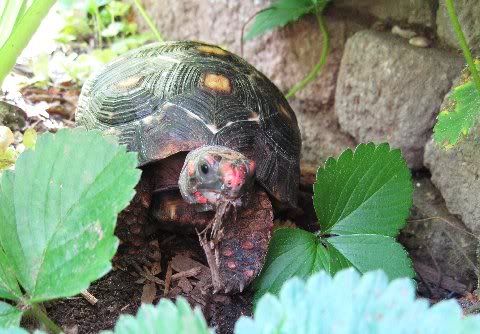Extreme close up of Tuck's shell. He's just over six weeks in this pic.

This pic is literally just minutes out of the egg:

Tuck is the first of my three hatchlings, so he's the oldest by a couple of days. Weights and measurements will be coming soon.

This pic is literally just minutes out of the egg:

Tuck is the first of my three hatchlings, so he's the oldest by a couple of days. Weights and measurements will be coming soon.
















